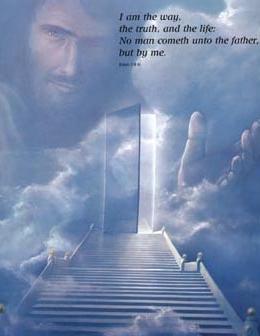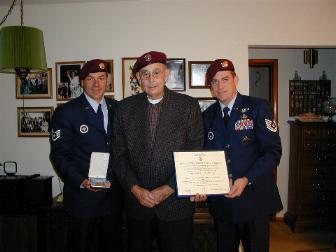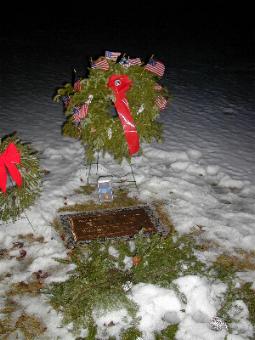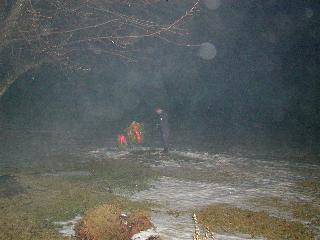
 The below information was taken from a site from the Airforce wrote in honor of our brother who gave his all for us as we battled that tremendous battle called "Operation Abilene" back on Easter Sunday April 10, 11 & 12 -1966 in South Vietnam. Your with God bro.
Written by Master Sgt. Pat McKenna.
Flying on almost 300 rescue missions in Vietnam,
Airman 1st Class Bill Pitsenbarger flirted with death
almost daily during the war, cheating the Grim
Reaper more times than Evel Knievel. The
21-year-old Air Force pararescue-man had ducked
barrages of bullets and flurries of flak more times
than he cared to remember while spiriting to safety
downed airmen and wounded soldiers. More than a
few GIs owed their very lives to the man friends
called “Pits.”
Despite the danger, Pitsenbarger loved the Air Force and his job,
which was to save lives. His commander, Maj. Maurice Kessler, called
him “One of a special breed. Alert and always ready to go on any
mission.” Another rescue pilot, Capt. Dale Potter, said Pits was a
“young eager kid who was always ready to go, and always willing to
get into the thick of the action where he could be the most useful.”
Pitsenbarger’s parents, William and Irene, noticed Bill had a voracious appetite for adventure at
a young age. When Bill played “Follow the Leader,” he’d dare his playmates to catch him as he
tiptoed around the ledges of the highest building or scrambled up the tallest tree in his
neighborhood in Piqua, Ohio, a wide place in the road near Dayton.
“Nothing scared him,” his father said, “not even Vietnam.”
When Bill was a junior in high school, he tried to enlist in the Army as a Green Beret, but his
parents refused to give their permission. Then, after he graduated from high school, an Air
Force recruiter turned Pitsenbarger’s ear, and on New Year’s Eve 1962, the young stockboy at
the local Kroger’s supermarket was on a train bound for San Antonio and Air Force boot camp.
“He didn’t tell us he was leaving until that night. But what can you do?” William said. “At least he
knew what he wanted to do.”
After completing pararescue training, which was barely four months long in the early 1960s, Bill
returned home a changed man. He seemed more confident, more self-assured.
“I could tell he was different. He wasn’t a kid anymore,” William said. “He thought he could do
anything, anytime, anywhere if he only put his mind to it. And I never really worried about what
he did until he went to Vietnam. I told Bill it’d kill his mother if she found out, so I didn’t tell her for
the longest time.”
Bill received orders in 1965 to report to Detachment 6, 38th Air Rescue and Recovery Squadron
at Bien Hoa Air Base near Saigon. His unit was composed of five aircrews that flew three
HH-43F Kaman Huskie helicopters, which had twin rotors that made it look like an upside-down
eggbeater.
With his unassuming and fun-loving personality, the tall, lanky lad from Ohio quickly became
one of the most popular guys on base. After duty hours, Pitsenbarger didn’t hole up in his hooch
or drink his sorrows away in the club. Instead, he spent his spare time honing his medical skills
in the 93rd MASH hospital’s emergency room.
“Bill never complained and never wrote a word about the conditions, but I know it must’ve been
miserable over there,” William said. “As far as he was concerned, he was having a good time.”
On March 7, 1966, Pitsenbarger’s crew dusted off to rescue a South Vietnamese soldier who
lost his foot in an old minefield. Nobody could figure out how to extract the wounded soldier
without tripping the unstable mines. Pits piped up, saying, “No problem, just lower me down on
the penetrator, I’ll straddle the guy, pick him up, and then you can lift me up.”
Simple, right? But everybody, including Pitsenbarger, knew the helicopter’s violent propwash
could trigger the mines, setting them off like tumbling dominoes, but Bill remained resolute. And
he was successful. For his courage, Pitsenbarger earned the Airman’s Medal that day as well as
Vietnam’s Medal of Military Merit and the Gallantry Cross with Bronze Palm.
“We often argued about who’d ‘go in’ on missions like this. All of us PJs had a strong desire to
save lives … that’s what we lived for. But Bill had a triple dose of that,” said now retired Chief
Master Sgt. Dave Milsten, who was the ranking pararescueman in Bill’s unit.
A little more than a month later, on April 11 at 3:07 p.m., the Joint Rescue Center dispatched two
Huskies from Detachment 6 to extract a half-dozen or more Army casualties pinned down in a
battle near Cam My, a few miles east of Saigon. Within a half-hour, “Pedro 97,” a crew of four,
including then-Staff Sgt. Milsten, and “Pedro 73,” with Pitsenbarger aboard, arrived on scene.
Purple smoke swirled up from a sea of lush green jungle marking the extraction point. The
choppers came into a hover over a hole in the triple-canopy jungle with trees reaching up to
150-feet high.
Below, a fierce firestorm raged. More than 400 battle-hardened Vietcong regulars had their teeth
into less than 150 troopers from the 1st U.S. Infantry Division, Second Battalion, 16th Infantry
Regiment’s Charlie Company. The soldiers from the famed “Big Red One” had circled the
wagons as the enemy surrounded them and blitzed them from all sides.
With no room to land, the choppers lowered their 210-foot long hoists into the thick of it to
extract the wounded. The two helicopters whisked off three casualties to a field hospital at Binh
Ba about 8 miles away from the fighting. While Milsten’s Pedro 97 refueled on the ground,
Pedro 73 returned to the battlezone.
Looking down, Pitsenbarger could see the soldiers struggling with the winch line and having
trouble loading the wounded on the Stokes litter, a wire-mesh stretcher. He volunteered to go
down and help, and the pilot reluctantly consented. On Pitsenbarger’s descent, a chorus of
crisscrossing bullets sang in the air.
First Lt. Johnny Libs, a Charlie Company platoon leader, told his machine gunner that the “guy
coming out of the helicopter from above, in an Air Force uniform, must be out of his mind to
leave his not-so-safe helicopter for the inferno on the ground.”
Said Libs, “We were in the fight of our lives, and I just couldn’t understand why anybody would
put himself in this grave danger if he didn’t have to.”
On the ground, Pitsenbarger treated and prepped the wounded for evacuation, and instructed
others on how to load the casualties on the litter. The airman had managed to get six more
soldiers to safety when Pedro 73 took a dozen .30 caliber rounds, one of which hit the fuel
valve, jamming the throttle wide open. With the engine screaming on max power, the helicopter
lurched out of the jungle and the pilot made a high-speed, running landing at Binh Ba.
But Pitsenbarger remained behind. With heavy mortar and small-arms fire, the helicopters
couldn’t return to rescue the rescuer.
“He knew the score pretty well, and he’d been fired at quite a bit before,” said then Airman 1st
Class Harry O’Beirne, a pararescueman born and raised in Dublin, Ireland. “He knew the
chance he was taking, and it wasn’t a case of going in there blindly.”
The enemy had a stranglehold on Charlie Company, and slowly began tightening the noose. For
the next hour and a half, Pitsenbarger attended to wounded soldiers, hacking splints out of
snarled vines, building improvised stretchers out of saplings, and even climbing a tree to retrieve
the Stokes litter that Pedro 73 jettisoned after it was hit. Throughout this time, Pitsenbarger
dodged a downpour of lead raining on the jungle.
Many of the young soldiers quickly squandered their ammo, firing wildly on full-automatic and
raking shadows in the jungle. Pitsenbarger scrambled around the injured and dead, collecting
their weapons and ammunition and then redistributing them to men still able to fight.
Army 1st Lt. Martin Kroah, a squad leader, said, “At times, the small arms fire would be so
intense that it was deafening, and all a person could do was get as close to the ground as
possible and pray. It was on those occasions I saw Airman Pitsenbarger moving around and
pulling wounded men out of the line of fire and then bandaging their wounds. My own platoon
medic, who was later killed, was totally ineffective. He was frozen with fear, unable to move. The
firing was so intense that a fire team leader in my platoon curled up in a fetal position and
sobbed uncontrollably. He had been in combat in both World War II and Korea.”
Another soldier, Sgt. Fred C. Navarro, a squad leader, saw Pitsenbarger take cover beside him
and selectively return fire. After 15 minutes, the soldier heard his rifle go silent. Before even
looking, Navarro knew the airmen was dead. Of the original 134 men in Charlie Company, 106
either were killed or wounded in action.
“It is not very often when a ‘grunt’ infantryman goes outside his circle to welcome an outsider,
but Bill is one of us,” Libs said. “I felt at the time, and still do, that Bill Pitsenbarger is one of the
bravest men I have ever known.”
The following morning, O’Beirne arrived to pull out the wounded and discovered a bloodbath.
To reach the casualties, he had to step over his fallen countrymen. An Army captain approached
him and said, “I’m sorry about your buddy. He’s over there.” Bill, his best friend and the guy who
slept in the bunk underneath him, had been shot four times, a rifle clutched in one hand and a
medical kit in the other.
“A poncho was covering Pits, and I remember getting very angry, just mad as hell,” said
O’Beirne, who is now a retired Army lieutenant colonel. “Then I got called out on another
mission and didn’t have time to grieve. But back at the unit, Bill’s death was a real kick in the
head. Pits’ death made us realize we weren’t invincible.”
Although Pitsenbarger didn’t escape that hellhole alive, nine other men did, thanks to the
courage and devotion to duty of a 21-year-old airman, a former supermarket stockboy from
Piqua, Ohio. For his bravery, the Air Force awarded Bill Pitsenbarger its second highest award
— the Air Force Cross, becoming the first enlisted airman to receive the medal.
“Bill was an ordinary guy with extraordinary courage and determination,” said William, his father.
“I’m very proud of him. And I’d like to think if you took any PJ in the Air Force and put him in the
same situation, they’d do the same thing. They’re special people.”
And they live by a special code, one that often demands they risk everything, pledging “These
Things We Do That Others May Live.”
The below information was taken from a site from the Airforce wrote in honor of our brother who gave his all for us as we battled that tremendous battle called "Operation Abilene" back on Easter Sunday April 10, 11 & 12 -1966 in South Vietnam. Your with God bro.
Written by Master Sgt. Pat McKenna.
Flying on almost 300 rescue missions in Vietnam,
Airman 1st Class Bill Pitsenbarger flirted with death
almost daily during the war, cheating the Grim
Reaper more times than Evel Knievel. The
21-year-old Air Force pararescue-man had ducked
barrages of bullets and flurries of flak more times
than he cared to remember while spiriting to safety
downed airmen and wounded soldiers. More than a
few GIs owed their very lives to the man friends
called “Pits.”
Despite the danger, Pitsenbarger loved the Air Force and his job,
which was to save lives. His commander, Maj. Maurice Kessler, called
him “One of a special breed. Alert and always ready to go on any
mission.” Another rescue pilot, Capt. Dale Potter, said Pits was a
“young eager kid who was always ready to go, and always willing to
get into the thick of the action where he could be the most useful.”
Pitsenbarger’s parents, William and Irene, noticed Bill had a voracious appetite for adventure at
a young age. When Bill played “Follow the Leader,” he’d dare his playmates to catch him as he
tiptoed around the ledges of the highest building or scrambled up the tallest tree in his
neighborhood in Piqua, Ohio, a wide place in the road near Dayton.
“Nothing scared him,” his father said, “not even Vietnam.”
When Bill was a junior in high school, he tried to enlist in the Army as a Green Beret, but his
parents refused to give their permission. Then, after he graduated from high school, an Air
Force recruiter turned Pitsenbarger’s ear, and on New Year’s Eve 1962, the young stockboy at
the local Kroger’s supermarket was on a train bound for San Antonio and Air Force boot camp.
“He didn’t tell us he was leaving until that night. But what can you do?” William said. “At least he
knew what he wanted to do.”
After completing pararescue training, which was barely four months long in the early 1960s, Bill
returned home a changed man. He seemed more confident, more self-assured.
“I could tell he was different. He wasn’t a kid anymore,” William said. “He thought he could do
anything, anytime, anywhere if he only put his mind to it. And I never really worried about what
he did until he went to Vietnam. I told Bill it’d kill his mother if she found out, so I didn’t tell her for
the longest time.”
Bill received orders in 1965 to report to Detachment 6, 38th Air Rescue and Recovery Squadron
at Bien Hoa Air Base near Saigon. His unit was composed of five aircrews that flew three
HH-43F Kaman Huskie helicopters, which had twin rotors that made it look like an upside-down
eggbeater.
With his unassuming and fun-loving personality, the tall, lanky lad from Ohio quickly became
one of the most popular guys on base. After duty hours, Pitsenbarger didn’t hole up in his hooch
or drink his sorrows away in the club. Instead, he spent his spare time honing his medical skills
in the 93rd MASH hospital’s emergency room.
“Bill never complained and never wrote a word about the conditions, but I know it must’ve been
miserable over there,” William said. “As far as he was concerned, he was having a good time.”
On March 7, 1966, Pitsenbarger’s crew dusted off to rescue a South Vietnamese soldier who
lost his foot in an old minefield. Nobody could figure out how to extract the wounded soldier
without tripping the unstable mines. Pits piped up, saying, “No problem, just lower me down on
the penetrator, I’ll straddle the guy, pick him up, and then you can lift me up.”
Simple, right? But everybody, including Pitsenbarger, knew the helicopter’s violent propwash
could trigger the mines, setting them off like tumbling dominoes, but Bill remained resolute. And
he was successful. For his courage, Pitsenbarger earned the Airman’s Medal that day as well as
Vietnam’s Medal of Military Merit and the Gallantry Cross with Bronze Palm.
“We often argued about who’d ‘go in’ on missions like this. All of us PJs had a strong desire to
save lives … that’s what we lived for. But Bill had a triple dose of that,” said now retired Chief
Master Sgt. Dave Milsten, who was the ranking pararescueman in Bill’s unit.
A little more than a month later, on April 11 at 3:07 p.m., the Joint Rescue Center dispatched two
Huskies from Detachment 6 to extract a half-dozen or more Army casualties pinned down in a
battle near Cam My, a few miles east of Saigon. Within a half-hour, “Pedro 97,” a crew of four,
including then-Staff Sgt. Milsten, and “Pedro 73,” with Pitsenbarger aboard, arrived on scene.
Purple smoke swirled up from a sea of lush green jungle marking the extraction point. The
choppers came into a hover over a hole in the triple-canopy jungle with trees reaching up to
150-feet high.
Below, a fierce firestorm raged. More than 400 battle-hardened Vietcong regulars had their teeth
into less than 150 troopers from the 1st U.S. Infantry Division, Second Battalion, 16th Infantry
Regiment’s Charlie Company. The soldiers from the famed “Big Red One” had circled the
wagons as the enemy surrounded them and blitzed them from all sides.
With no room to land, the choppers lowered their 210-foot long hoists into the thick of it to
extract the wounded. The two helicopters whisked off three casualties to a field hospital at Binh
Ba about 8 miles away from the fighting. While Milsten’s Pedro 97 refueled on the ground,
Pedro 73 returned to the battlezone.
Looking down, Pitsenbarger could see the soldiers struggling with the winch line and having
trouble loading the wounded on the Stokes litter, a wire-mesh stretcher. He volunteered to go
down and help, and the pilot reluctantly consented. On Pitsenbarger’s descent, a chorus of
crisscrossing bullets sang in the air.
First Lt. Johnny Libs, a Charlie Company platoon leader, told his machine gunner that the “guy
coming out of the helicopter from above, in an Air Force uniform, must be out of his mind to
leave his not-so-safe helicopter for the inferno on the ground.”
Said Libs, “We were in the fight of our lives, and I just couldn’t understand why anybody would
put himself in this grave danger if he didn’t have to.”
On the ground, Pitsenbarger treated and prepped the wounded for evacuation, and instructed
others on how to load the casualties on the litter. The airman had managed to get six more
soldiers to safety when Pedro 73 took a dozen .30 caliber rounds, one of which hit the fuel
valve, jamming the throttle wide open. With the engine screaming on max power, the helicopter
lurched out of the jungle and the pilot made a high-speed, running landing at Binh Ba.
But Pitsenbarger remained behind. With heavy mortar and small-arms fire, the helicopters
couldn’t return to rescue the rescuer.
“He knew the score pretty well, and he’d been fired at quite a bit before,” said then Airman 1st
Class Harry O’Beirne, a pararescueman born and raised in Dublin, Ireland. “He knew the
chance he was taking, and it wasn’t a case of going in there blindly.”
The enemy had a stranglehold on Charlie Company, and slowly began tightening the noose. For
the next hour and a half, Pitsenbarger attended to wounded soldiers, hacking splints out of
snarled vines, building improvised stretchers out of saplings, and even climbing a tree to retrieve
the Stokes litter that Pedro 73 jettisoned after it was hit. Throughout this time, Pitsenbarger
dodged a downpour of lead raining on the jungle.
Many of the young soldiers quickly squandered their ammo, firing wildly on full-automatic and
raking shadows in the jungle. Pitsenbarger scrambled around the injured and dead, collecting
their weapons and ammunition and then redistributing them to men still able to fight.
Army 1st Lt. Martin Kroah, a squad leader, said, “At times, the small arms fire would be so
intense that it was deafening, and all a person could do was get as close to the ground as
possible and pray. It was on those occasions I saw Airman Pitsenbarger moving around and
pulling wounded men out of the line of fire and then bandaging their wounds. My own platoon
medic, who was later killed, was totally ineffective. He was frozen with fear, unable to move. The
firing was so intense that a fire team leader in my platoon curled up in a fetal position and
sobbed uncontrollably. He had been in combat in both World War II and Korea.”
Another soldier, Sgt. Fred C. Navarro, a squad leader, saw Pitsenbarger take cover beside him
and selectively return fire. After 15 minutes, the soldier heard his rifle go silent. Before even
looking, Navarro knew the airmen was dead. Of the original 134 men in Charlie Company, 106
either were killed or wounded in action.
“It is not very often when a ‘grunt’ infantryman goes outside his circle to welcome an outsider,
but Bill is one of us,” Libs said. “I felt at the time, and still do, that Bill Pitsenbarger is one of the
bravest men I have ever known.”
The following morning, O’Beirne arrived to pull out the wounded and discovered a bloodbath.
To reach the casualties, he had to step over his fallen countrymen. An Army captain approached
him and said, “I’m sorry about your buddy. He’s over there.” Bill, his best friend and the guy who
slept in the bunk underneath him, had been shot four times, a rifle clutched in one hand and a
medical kit in the other.
“A poncho was covering Pits, and I remember getting very angry, just mad as hell,” said
O’Beirne, who is now a retired Army lieutenant colonel. “Then I got called out on another
mission and didn’t have time to grieve. But back at the unit, Bill’s death was a real kick in the
head. Pits’ death made us realize we weren’t invincible.”
Although Pitsenbarger didn’t escape that hellhole alive, nine other men did, thanks to the
courage and devotion to duty of a 21-year-old airman, a former supermarket stockboy from
Piqua, Ohio. For his bravery, the Air Force awarded Bill Pitsenbarger its second highest award
— the Air Force Cross, becoming the first enlisted airman to receive the medal.
“Bill was an ordinary guy with extraordinary courage and determination,” said William, his father.
“I’m very proud of him. And I’d like to think if you took any PJ in the Air Force and put him in the
same situation, they’d do the same thing. They’re special people.”
And they live by a special code, one that often demands they risk everything, pledging “These
Things We Do That Others May Live.”

|
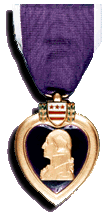

 Below are two men's words from Charlie Company in memory of William Hart Pitsenbarger. The first was submitted by Charlie Epperson survivor of Charlie Company. The second from Ron Haley survivor of Charlie Company.
This letter was submitted by Charlie Epperson on July 17, 2000 in behalf of William Pitsenbarger to receive the Medal of Honor.
Below are two men's words from Charlie Company in memory of William Hart Pitsenbarger. The first was submitted by Charlie Epperson survivor of Charlie Company. The second from Ron Haley survivor of Charlie Company.
This letter was submitted by Charlie Epperson on July 17, 2000 in behalf of William Pitsenbarger to receive the Medal of Honor.
To whom it may concern,
My name is Charles F. Epperson and I was a member of the ( 1st Platoon) 1st United States Army Infantry Division that battled Vietcong troops just west of Vung Tau on April 11, 1966. I personally witnessed the actions of USAF A1C William H. Pitsenbarger. I am writing you to recommend Pitsenbarger for the Medal of Honor.
I had assumed, given Pitsenbarger's actions that day, that he had received the Medal of Honor. When I recently found out he hadn't received the Medal of Honor I was angry. Here is what I remember of Airman Pitsenbarger during the 1 1/2-2 hours I spent with him.
He dropped down into the jungle roughly two hours before dark as a raging firefight was going on. The fighting was so fierce that when one of the Army helicopters came over to drop a box of M-16 ammunition, it couldn't even slow down because it was being fired on so much by the Vietcong. The ammunition box came out of the Huey so fast from 100 feet above the jungle floor that it killed an injured man on impact when it landed on his chest.
Men from our company were working on clearing a landing zone for the rescue helicopters when Pitsenbarger descended to the ground from his HH-43 Huskie. I was glad to see him as I was one of the wounded ( two fingers had been shot off my left hand) and we were out of medical supplies. Pitsenbarger treated the wounded and began evacuating the most seriously wounded men on the rescue litters being dropped down by the helicopters. Eventually, the helicopters had to withdraw and I was left on the ground as I wasn't as seriously wounded as many of the other men who were evacuated.
Pitsenbarger was a great source of comfort. I was very scared. The bullets flying around constantly from every direction. I was young and had been wounded. I didn't even lnow where my weapon was. He had a great calming effect on myself and the other wounded. He calmed me down. Once he treated me, I began to help him treat and evacuate the other wounded. He gave me clear orders in a calm manner as to how to aid the injured men. He was unarmed and was going from casualty to casualty while seemingly ignoring the bullets that were flying everywhere. Finally, Sgt. Ronald J. Seaholtz, of the 3rd platoon, gave Pitsenbarger an M-16 and a helmet telling him, "Here, you're going to need this." By this time, Vietcong snipers were now starting to climb up into trees to get better shots at us. Pitsenbarger's constant movement made him a target but that didn't bother him as he just kept going from wounded man to wounded man.
Around the time the sun was going down, Pitsenbarger went off with Sgt. Seaholtz. I never saw him again until I was covering bodies the next day. I covered Pitsenbarger's body. He had been shot right between the eyes. When another USAF pararescueman ( A1C Henry J. O'Beirne) showed up that morning asking were Pitsenbarger was, I took him to Pitsenbarger's body. O'Beirne was getting real emotional when he saw Pitsenbarger's body so I left pretty quickly.
Simply put, William Pitsenbarger went above and beyond the call of duty. There was gunfire everywhere and he never stopped treating the wounded once because of it. Pitsenbarger treated so many wounded men that he eventually ran out of medical supplies, even though he had a whole bag full when he first arrived on the ground. If his actions don't merit the awarding of the Medal of Honor then I don't know what it takes to receive the Medal of Honor.
Sincerely,
Charlie F. Epperson 1st Div, 2nd Bn, 16th Inf. Co. C-65-66
~~~~~~~~~~~~
~~~~~~~~~~~~
 ~~~~~~~~~~~~
~~~~~~~~~~~~
~~~~~~~~~~~~
~~~~~~~~~~~~
** Cole
Son, I’d like to introduce you to the bravest man I have ever known, William "Pits" Pitsenbarger,USAF. Navigate to: https://www.angelfire.com/mo2/Mudsoldiers/Pitsenbarger.html This story is true, I was there. I didn't know Pits personally, he wasn't in Charlie Company. He was in the Air Force, like you are. We didn't know each other, he and I, all he knew of any of us was that we were but a few, fighting against many, that we were losing, and that we needed help. We had too many dead and wounded to even try to break out. He didn't have to come down through that jungle canopy to help us, but he did. What kind courage was it that made him enter such a one sided fight as we were in? I have seen the youthful, ignorant, "I'm too tough to die" kind of courage, and that wasn't it. When one has seen good friends die in bad ways, there is a vengeance seeking insanity that turns normal men into mad dog killers eager to join such a fight. But that isn't courage, that is hate.
Pits wasn't a mad dog killer, nor was he driven by hate. There is another kind of warrior that, in the face of danger, when most would be frozen in panic, they become calm, focused, and clear thinking enough to see what they must do to survive. But Pits didn't come to fight (though he did fight), and he wasn't motivated by fear or driven by the intent to get "pay back." If it were his own survival he sought, he wouldn't have even left his helicopter. Once on the battlefield, once he saw the situation, saw the carnage all around him, he could have just turned around and went right back up to his chopper .. but he didn't. His courage wasn't born of self-preservation, fear, hate, or meanness. Nor was he ignorant, vengeful or crazy. He was a young man who wanted to save the lives of other men. He was moved by what is .. "best" in men. The unselfish love of his fellow man.
Son, I'd like to introduce you to the bravest man I have ever known, but I can't, just yet. He died that day, April 11, 1966, on the field of battle. I know where he is now, and I hope you and I will be able to join him there one day. I'd like to thank him for doing what he did, and to introduce him to you, my son. I'm sure we will become friends.
Your loving dad
Ron "Trash" Haley C 2/16 "Rangers" 65-66

|













